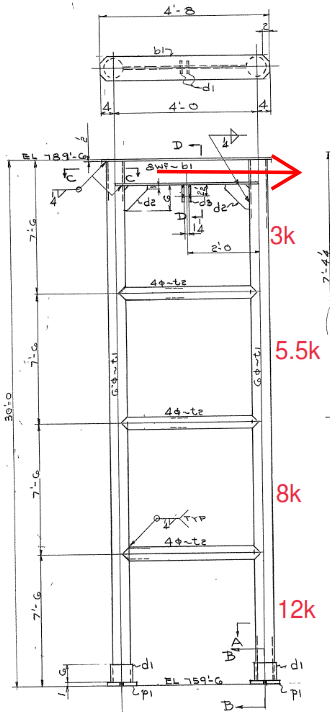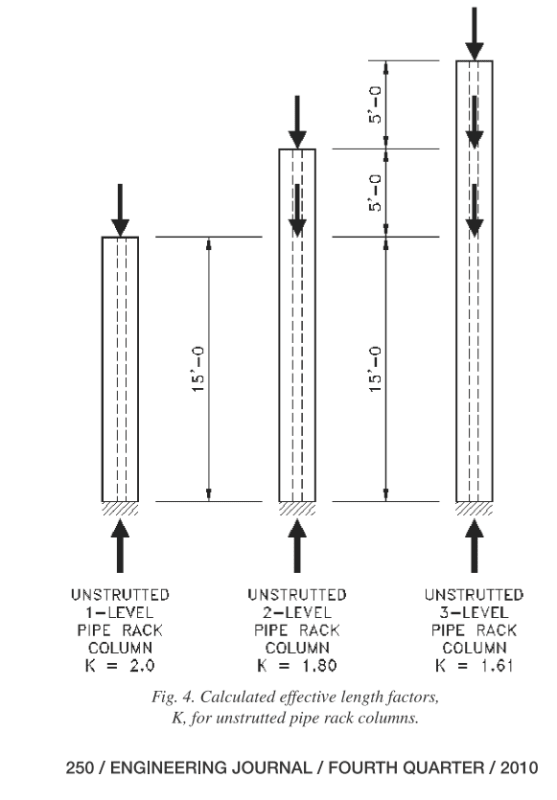HDStructural
Structural
Hello all,
I have a question regarding unbraced length for a column with intermittent loading. This is for a planar pipe bent (see photo below). The forces in the column increase as they go down due to the lateral load at the top. For the purpose of this discussion, I am not worried about the columns buckling to the left or right, but only in and out of the page. It seems overly conservative to say that the unbraced length for the bottom section with the highest load is 30' with k=2.1. I am familiar with the paper "Elastic Buckling of a Column Under Varying Axial Force". Using this method will give me a reduced overall k value to apply to the column as a whole.
I am analyzing this in STAAD. Do you think it is legitimate to say the unbraced length (into the page) for the bottom section is 7.5' with k=2.1, then 15' with k=2.1 for the next section and so on working my way up? Or should I stick with the method above using an unbraced length of 30' for the whole column with a reduced k value calculated per elastic buckling method?

Thanks
I have a question regarding unbraced length for a column with intermittent loading. This is for a planar pipe bent (see photo below). The forces in the column increase as they go down due to the lateral load at the top. For the purpose of this discussion, I am not worried about the columns buckling to the left or right, but only in and out of the page. It seems overly conservative to say that the unbraced length for the bottom section with the highest load is 30' with k=2.1. I am familiar with the paper "Elastic Buckling of a Column Under Varying Axial Force". Using this method will give me a reduced overall k value to apply to the column as a whole.
I am analyzing this in STAAD. Do you think it is legitimate to say the unbraced length (into the page) for the bottom section is 7.5' with k=2.1, then 15' with k=2.1 for the next section and so on working my way up? Or should I stick with the method above using an unbraced length of 30' for the whole column with a reduced k value calculated per elastic buckling method?

Thanks

